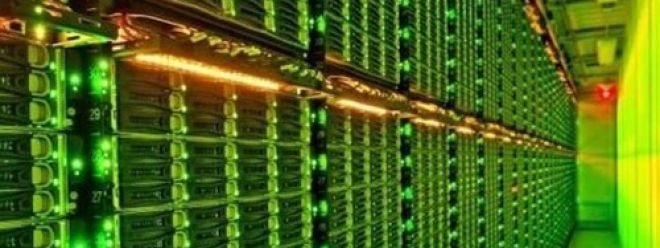Why green data centers are the key to promoting sustainable development strategies
2021.05.31


As people's environmental awareness grows stronger, it is essential to promote more sustainable business practices.
For people, making life more sustainable may mean developing more environmentally friendly habits, such as recycling waste, reducing water consumption, or using electric or hybrid vehicles. In the long run, all these changes and adjustments in living habits will bring greater environmental benefits.
For enterprises, this is a more challenging and non-linear task. In recent years, the public and shareholders’ concerns about environmental protection have put greater pressure on business operations, demanding proof that they are taking the necessary measures to combat climate change, usually by disclosing their goals to reduce their carbon footprint.
The IT industry is a typical example, which is actively seeking various methods to minimize electricity generated from fossil fuels and improve waste management and water conservation measures. But the IT industry is an expanding industry, mainly because people are increasingly relying on digital tools and platforms, which means that it brings some difficulties in reducing energy consumption, especially in data center operations.
The role the data center must play
For the data center industry, its energy consumption accounts for 1% of the global energy consumption, and the sustainable development of the data center has embarked on a more difficult path. Based on its huge business scale and scope, data centers are also obliged to implement and promote more sustainable options and solutions.
If people regard the data center as the center of connectivity, data storage and processing, and various business-critical applications, it is natural to believe that data storage and Internet use will continue to increase in the next few years.
However, this means that the data center uses green energy-saving technologies to maintain energy consumption at a sustainable level. After all, people are increasingly relying on emerging technologies that drive innovation, such as 5G, the Internet of Things, and machine learning, all of which require data centers to operate.
It can even be said that the data center bears the ethical responsibility of leading change, and therefore assumes a key role in implementing energy-saving and environmental protection measures. These measures should minimize the impact of the data center on the ecosystem. As part of a long-term green strategy, some companies have pledged to reduce their environmental footprint and invest in more sustainable energy solutions. But what measures can be taken to promote changes in this area?
What can data centers do to influence change?
At present, data center operators have taken many measures to solve their energy consumption problems, but if they want to keep data center energy consumption to a minimum, they need to speed up this process, especially considering that data usage is only due to the first quarter of 2020. The outbreak of the coronavirus has increased by 47%.
Data compression is an example, it can achieve higher efficiency, especially when integrating advancements in cloud computing technology. This process involves reducing the file size by re-encoding the file data to use less storage space compared to the original file.
The main advantage of data compression is that compressed files require less transmission time and consume less network bandwidth. By reducing file size, data transmission time, and communication bandwidth, less storage capacity is required, which reduces energy consumption, improves production efficiency, and saves a lot of costs.
On the other hand, immersion cooling is a more practical measure to solve the problem of low energy efficiency. In this process, computer components and even the entire server are immersed in a dielectric liquid, which has a higher heat transfer performance than air.
This solution was recently adopted by 4D, which installed energy-efficient Pods at its Gatwick plant that uses immersion cooling technology. Pod uses a biodegradable medium fluid (its density is only half that of water) and heat exchangers to cool IT equipment. The heat-carrying fluid is cooled by an internal cooler and cooling water. The cooling water is then pumped out and cooled again in the cooling tower of the 4D company.
Another way to make data centers more sustainable is to use electricity from renewable sources. Since electricity is the source of power for its daily operations, the impact of the data center on the environment will largely depend on its source of electricity. This means that, depending on its resources and location, data centers can use electricity from renewable energy sources, including wind, solar, and even tidal energy.
future development
Committed to the green agenda is obviously a step in the right direction for any company, but to become a truly sustainable company, companies need to ensure that energy efficiency is at the core of all aspects of data center operations.
By procuring more sustainable materials and technologies for the design and maintenance of these energy-intensive centers, companies can operate their data centers in a smart and clean manner, ensuring that the negative impact on the environment is minimized as data consumption continues to grow.
【Editor's Choice】